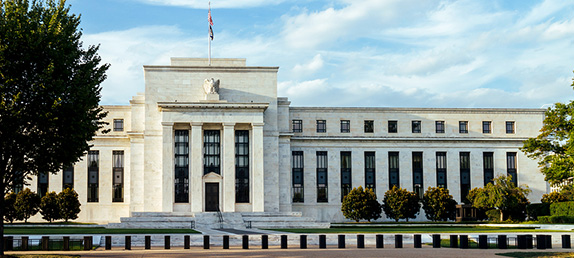
No single act will affect the price of gold in 2015 quite like the Federal Reserve’s upcoming decision about whether or not to raise interest rates. For the past five years, gold has stayed near or above the $1,200-per-ounce figure as the Fed enacted little to no interest hikes in order to facilitate more borrowing, more spending, and more progress to lift the U.S. out of the post-recession slump. There’s no single yes-or-no vote on the table at the moment, but a Wall Street Journal survey revealed that most economists believe the Fed will raise interest rates in autumn, with 80% believing that the hike will come sometime in 2015. How will a higher return on borrowing affect gold?
“Free Money” Policy
Gold has an inverse relationship with the U.S. dollar. Since the value of gold rises as the value of currency falls, gold has enjoyed a few years of exceptional highs after the dollar sank in the recession. In response, the Fed has utilized low interest rates as a means of propping up the dollar, and gold became a safe haven fund to hedge against inflation because physical gold has more real value than inflated paper currency. Recently, as the economy has been slowly improving, the Federal Reserve has indicated at different points in time an eventual end to low interest rates. Last year, the Fed ended quantitative easing (QE), but sluggish growth in 2015 continues to keep the economy from chugging forward into a full recovery. This makes the Fed hesitant to raise interest rates quite yet, but policymakers are under increasing pressure to put an end to the “free money” policy and utilize monetary policy to convince businesses to hire and spend rather than sitting on their cash.
Temporary Loss in Value
It’s worth nothing that the Fed’s policies alone will not send gold either spiraling downwards or shooting upwards. In 1999, the Fed opted to raise interest rates, but the demand for gold kept the precious metal from losing much value. From 2004 to 2006, the “tightening” policies caused a stock market correction but saw gold gain climb by about 60%. It’s more likely now that if the Fed raises interest rates, gold will lose a few percentage points of value but rebound in the long-term. Kitco reports that gold prices have historically fallen by an average of two percent in the months leading up to an interest hike, as investors shift their money to the bond market in order to capitalize from the higher lending rates.
Be Prepared
While the Fed’s policy decision to raise interest rates doesn’t spell good news for gold investors, it’s also not going to be more than a blip for the metal’s long-term growth. It’s important for gold traders not to sell off in fear, especially if the dollar underperforms after the hike and sends the market running back to gold in order to maintain value. Gold is a long-term investment with significant holding power, so any interest hikes will only be a temporary dip in gold prices, with a long horizon of gains ahead. In fact, savvy gold investors may already have a gold buying strategy for when a Fed interest hike occurs.

